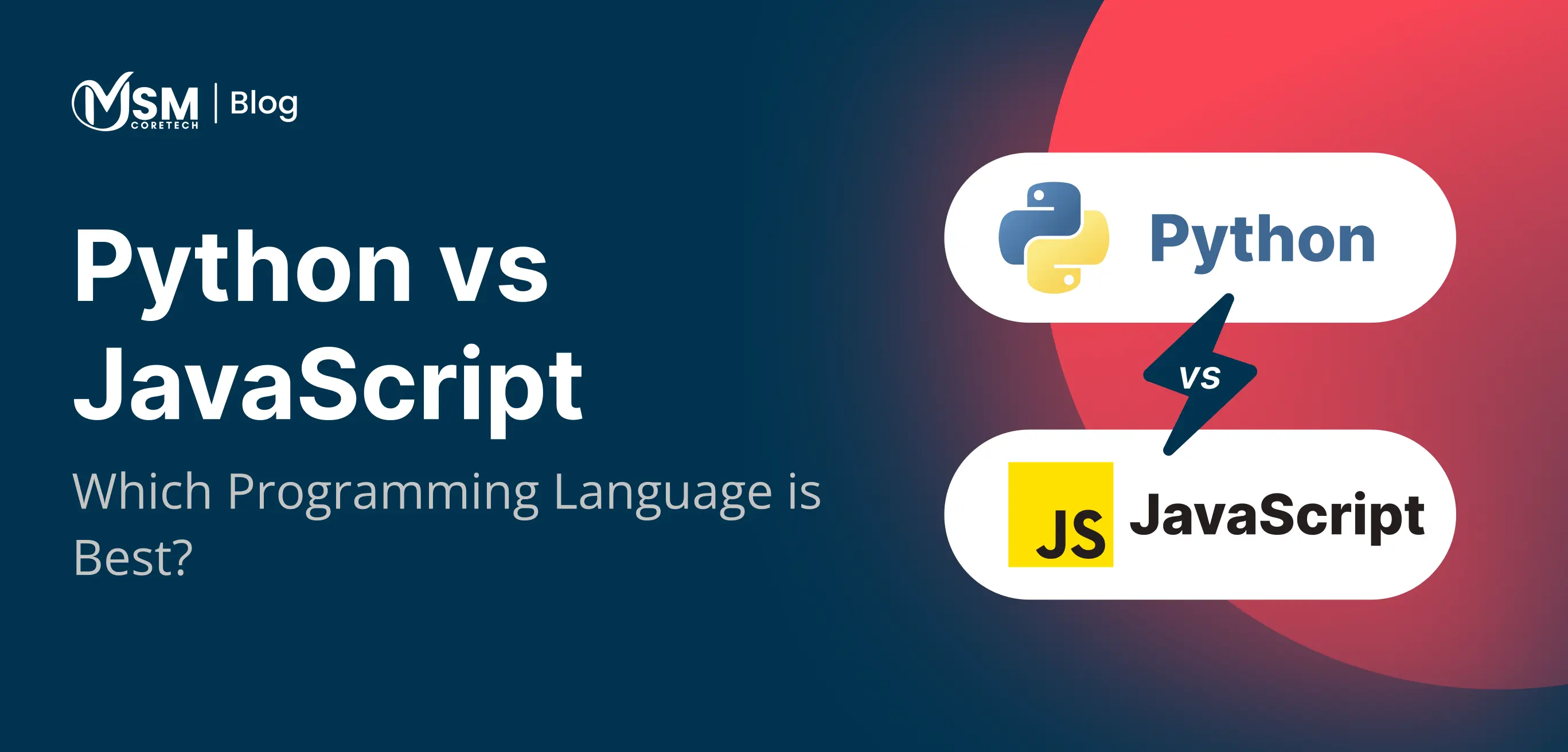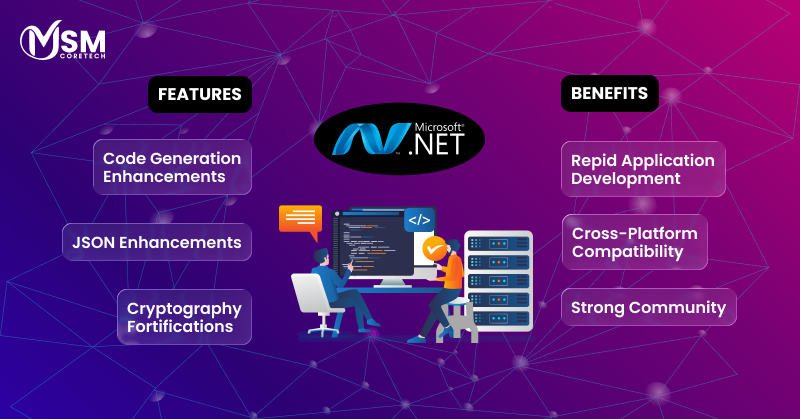Python vs JavaScript: Which Programming Language Is Best in 2025?

In the digital world of software development, various programming languages are available for use. Each language has its own set of features in relation to specific types of projects.
Languages like Python are developed for easier use, which helps new developers with fields like data analysis and web development. JavaScript helps in developing websites with vast amounts of features. Analysing each language's capabilities can be very beneficial in selecting the right language for your project. Basics of one language can be used to determine the usage of other languages, so while starting, one should learn a single language at a time, as it will help them in understanding the nature of other languages later on.
This blog aims to determine the best programming language by comparing two of the most influential languages, i.e, Python and JavaScript.
A Quick Overview of Python
Python is a renowned, well-interpreted, high-performing programming language that offers distinctive features. Python syntax is an easy-to-use language that leverages the importance of quick understanding and lowers the cost of the overall program. Python provides packages and modules to offer support for code reuse and to maintain program resistance. Moreover, according to a study, around 80% of the machine learning engineers are using Python as their top-prioritised and used programming language.
Advantages of Python -
- Open-source - Python is a fully optimised open source language; it can be easily integrated or distributed without any authentication. Anyone can download, make changes, and transfer their own developed version of the language. This is a very beneficial thing for developers as it allows them to modify and customise the language according to their needs.
- Large library - Python has a large amount of library materials that provide different kinds of features for developing applications, which reduces the reliability of depending on external sources.
- Boosts productivity - Python enhances the productivity level as it offers developers in solving issues rather than understanding and learning the language dynamics. In addition, developers can build big applications with the least code usage, and this reflects the most prominent benefits of Python programming.
- Cross-platform compatibility - Python offers easy collaboration with tools like Windows, Linux, and macOS, which allows developers to generate code and leverage it across different systems with minimal changes required.
Overview of JavaScript
JavaScript is an effective programming language that helps in leveraging web development changes, game development, and many more in web applications. It offers developers in implementing advanced features on web pages. Several browsers utilise JavaScript as their development language for enhancing web features.JavaScript also offers mathematical calculations, integrates with HTML while offering dynamic presentation features, and gathers content from other web sources easily.
Advantages of JavaScript -
- Dynamic interface - JavaScript provides different kinds of interfaces to developers for creating user-friendly websites. Websites with drag and drop down features help in attracting users more, which results in high conversion rates.
- Extended functionality - In order to save cost and time, JavaScript allows its users to integrate third-party applications through which developers can input their code with the new JavaScript code, offering a smooth transition.
- Independent platform - Most of the search engines support JavaScript, offering a simple identification of the JavaScript code. Developers do not need to buy any of its subscriptions or install any extension; it is a widely available technology.
- Easy usage - JavaScript is one of the easiest languages for web development. It is designed for new-age tech professionals to easily understand what programming does and how.
- Decrease the server pressure - The language runs its programming on the client end rather than on the developer's server, due to which the server does not need to handle the stress of executing operations.
Python vs JavaScript: Key Differences at a Glance
Both of the language programs are highly performative and have dynamic features, but they have some key differential functioning, which are described below.
| Key features | Python | JavaScript |
| Tooling | Well-designed for its matured environment for functions like data analysis, scientific computing and artificial intelligence. | Leverages an advanced ecosystem and integrates with their part applications for front-end and back-end development. |
| Data Structures | Consists built-in data mechanisms like tuples, lists and dictionaries. | Leverage objects and arrays as primary data structures. |
| Typing | Strong and dynamically written. It does not allow the user to type implicit conversion which prevents the code from facing any kind of barrier during the development process. | Weak and dynamically written. It offers developers to input implicit conversations which can offer flexibility in generating code but could lead to runtime issues. |
| Mobile application development | Less suitable for mobile application development as it is not designed for developing native mobile applications. | Largely utilised in mobile application development with integration of mechanisms like Iconic and React Native. |
| Standard library | It leverages extensive library support that helps in covering a wide range of features such as testing, networking. | Offers limited support in comparison to python. Its structure heavily depends on third party integrations. |
Syntax Comparisons of Python and JavaScript -
Python - It utilises indentation for defining the code blocks and scope.
if True:
print("This is inside the if block")
else:
print("This is inside the else block")
JavaScript - It utilises curly brackets to refer to code blocks and scope.
if (true) {
console.log("This is inside the if block");
} else {
console.log("This is inside the else block");
}
Ecosystems and Frameworks
Python
The Python ecosystem is very famous for its standard library and frameworks, which support various tasks and domains, including functions like scientific computing , data analytics, and automation. It offers a well-structured design for developers through which they generate more relevant and advanced applications.
Frameworks -
- FastAPI - A highly performing web development platform for generating relevant APIs, it is famous because of its speed and advanced capabilities, which it offers.
- Pyramid - An easy platform through which developers can build web applications with the least amount of effort.
- NumPy - It is a fundamental packaging tool for scientific analysis that offers rigorous support for developing multidimensional mathematical operations.
- Scrapy - This platform helps in scraping highly sensitive content from the web for leveraging high efficiency.
JavaScript -
JavaScript has one of the largest ecosystems with dynamic features, with a massive collection of material available controlled by Node Package Manager (npm). It helps in optimizing both the front-end and back-end development processes.
- Angular - It is an open-source framework leveraged by Google for developing scalable single-page applications.
- Vue.js - This platform helps in generating user interfaces, very popular for its ease of use features. It also features a large amount of materials and tools, which help in developing complex applications.
- Express.js - This framework offers minimal and flexible functions to generate web applications and different APIs.
- Electron - This framework helps in developing integrated web applications using tools like HTML, CSS, and JavaScript.
Python vs JavaScript Performance and Scalability
Python acts as an interpreted written language, providing faster development, but faces significant limitations in scaling. On the other side, Java, a strategically written language, provides better start performance to developers and is used widely for developing enterprise-level applications.
| Factors | Python | JavaScript |
| Performance and speed | As it is an interpreted language, Python develops code lin by line which eventually reduces the speed for complex and scaled applications. | Java Script offers fast execution of the program with the help of its Just -In-Time technique for faster code development and compilation. |
| Parallelism | The global interpreter lock present as a significant disadvantage in Python language programming as it restricts multiple codes from executing in a single process. | Java Virtual machine offers native support for developing multiple codes with any kind limitation like GIL. |
| Scalability | Python developed applications are scaled through running several processes at a single time. | As JavaScript is built for developing enterprise-level applications it can easily scale the operation within its ecosystem itself. |
JavaScript Vs Python use Cases - Which One Suits Better
JavaScript -
- Mobile application development - Platforms like Iconic and Native allow users to develop cross-platform mobile applications, consisting of a single code for both Android and iOS users.
- Single-page applications - Platforms like Vue.js use the JavaScript programming language to develop highly fast-loading single-page web applications.
- Server-side applications - Big organisations like PayPal and Netflix use Node.js for managing their business database and developing single APIs.
- User-friendly interfaces - JavaScript helps in developing powerful animations, drag and drop down menus, and offers image canvas and crocodiles for generating high user engagement.
Python -
- Web development - Python is largely used for developing server-side web development programs, with integration of platforms like Flask and Django.
- Automation and scripting - Python promotes automation for repetitive tasks, and this consists of scripting of information, web scraping, file management, etc.
- Game development - Python can be used for developing games, more preferably for generating prototypes with the help of its gaming library material, Pygame, for enhanced graphics and sound functionality.
- Data analytics - Python offers a vast library of support tools, such as NumPy and Matplotlib, for functions like data analysis and visualisation.
Learning Curves and Developers' Experience
Python Learning Curve:
Python aims to focus on leveraging a simple and easily understandable developer experience, which makes it easier for new developers to build applications with the least level of language usage. It’s easily understandable that its English-like syntax reduces the chances of barriers, which helps in offering an easy learning process.
Developer Experience:
- Stability and consistency - The Python programming language offers a stable environment with the integration of its vast library, which offers consistent support for developing web applications.
- Developing prototypes - Python's simple syntax and large library support help developers in generating and testing their core ideas easily.
JavaScript Learning Curve:
As it aligns with browsers easily, JavaScript's learning curve can be precipitous because of its complex structure. Moreover, it offers a unique full-stack developer experience, which is needed for the modern web application development process.
Developer Experience:
- Fast execution for web - JavaScript engines like Chrome’s V8 are highly optimized, making JavaScript exceptional for tasks that need real-time updates, such as developing highly attractive games and websites.
- Vast and active ecosystem - The JavaScript ecosystem is centred on the help of Node Package Manager with over 1.5 million packages in it. This helps in leveraging a well-designed framework for every need.
Job Opportunities in JavaScript and Python
Python Developers:
- Automation engineer - Roles regarding developing scripts and tools for automating simple tasks in different sectors.
- Backend Developer - Developing fast server-side web applications with integration of several tools such as Flask and Django.
- Machine learning engineer - Roles in developing, designing, and deploying machine learning tools, integrating with frameworks like PyTorch and TensorFlow Flow, etc.
JavaScript Roles:
- Front-end developer - Roles in offering services like development of interactive and dynamic user interfaces for web applications by integrating platforms like Vue.js.
- Mobile application development - Roles in building cross-platform mobile applications by deploying platforms like Iconic.
- Game developer - Roles in developing web-based games utilising JavaScript libraries and Frameworks.
Future Trends – Python vs JavaScript in 2025 and Beyond
In the rapidly transforming landscape of programming languages, some of the languages, such as Python and JavaScript, have leveraged a crucial impact. Moreover, as we analyse more, these two renowned programming languages are constantly dominating the web development market. JavaScript will continue to offer full-scale programming functions while optimizing both front-end and back-end development. Python will continue to enhance features like data analytics, scientific computing, and task automation with the domination of Artificial intelligence.
In 2025, professional developers will prefer both languages as their programming tools because both are the most reliable web development languages and offer different benefits.
Which Language should you Choose?
The selection of the language should be done on the basis of your use case. If you are aiming to develop web applications with integration of AI models, data analysis, and market research, then you should prefer Python as your programming language. With the help of its extensive library support the language offers flexible working with heavy AI-powered workloads.
However, JavaScript should be utilised when one is building a scalable enterprise-level web application that requires privacy of sensitive data and offers extensive support with the integration of third-party applications.
Conclusion
The selection between JavaScript and Python totally depends on the goals that one wants to achieve, by analysing your team's expertise, resource requirements, and business needs, as no language is universally more powerful. However, JavaScript offers fully optimised and advanced front-end development, and Python focuses on enhancing features like data analysis and integration with AI.
“Whether you prefer JavaScript or Python, what truly matters is which can offer the most impact.”
Related Blogs

The Enduring Popularity of .NET: From Framework to Core and Beyond
Explore why .NET remains a leading development platform, from the classic Framework to modern .NET Core, offering performance, stability, and cross-platform power.
Read More

WebAssembly & Edge Computing: Build Near-Native Speed Apps
WebAssembly combined with edge computing enables developers to build apps that run at near-native speed with minimal latency. This powerful approach delivers faster execution, better scalability, and improved user experience by running code closer to users worldwide.
Read More

How Much Does It Cost To Build Aged Care Management Software?
Discover the complete cost to develop aged care management software. Learn about essential features, pricing factors, tech stack, and tips to reduce overall development costs.
Read More




